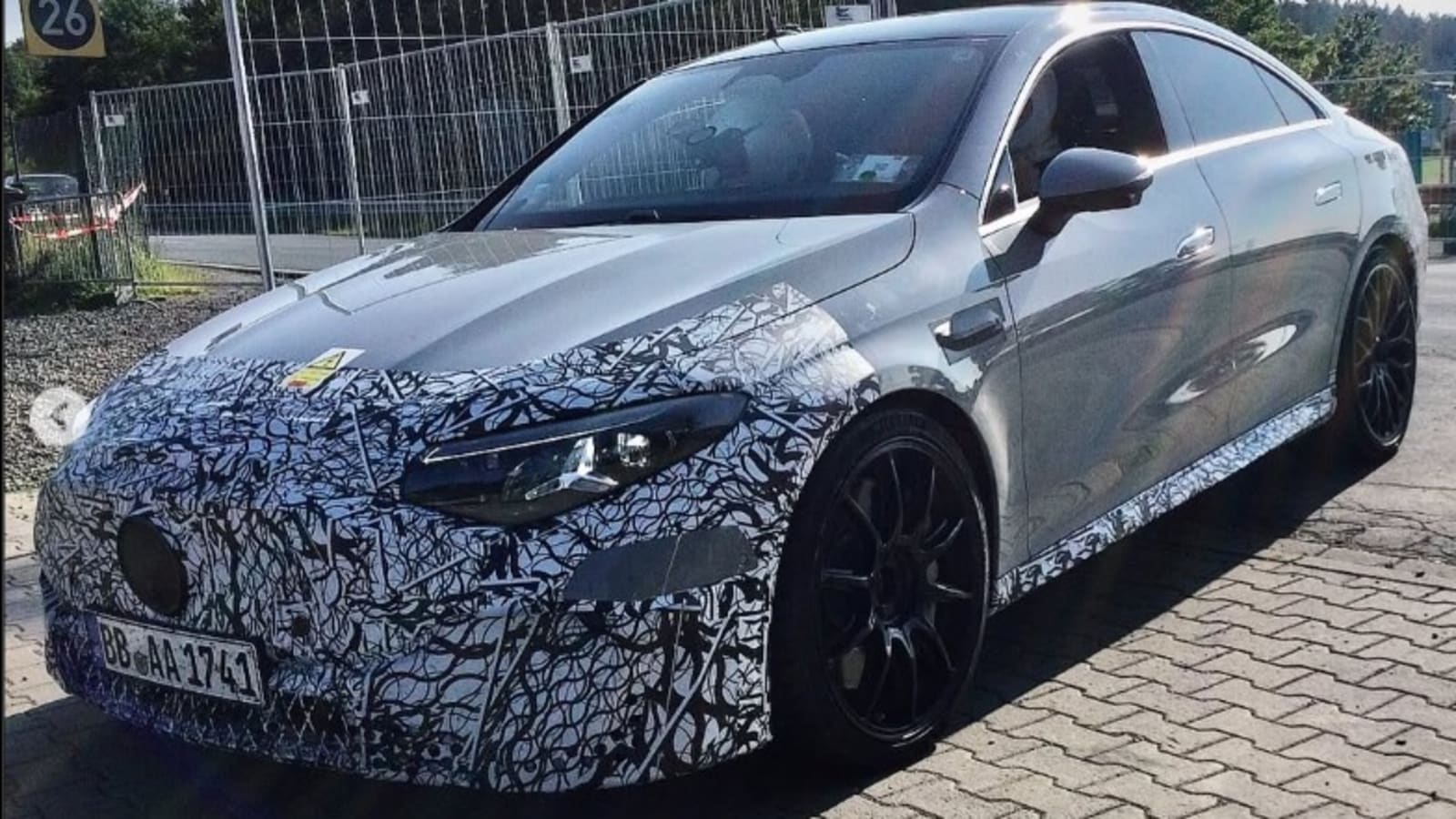Overview
‘Buy Volvos – They’re boxy but good’ was Volvo’s self-deprecating slogan applied to print advertisements, primarily in the US, in the 1980s. It typified Swedish understated brand of humour, amused readers to the point of purchase consideration, and helped fuel Volvo’s safety push through to sales when styling clearly wasn’t up to the task.
That ad campaign doesn’t run anymore but Volvo clings strongly to the 240-era boxy styling with the launch of its first all-EV SUV, the EX90.
Like the seven-seat 245 of the 1980s, the EX90, priced from $124,990 excluding on road costs, is a car for the new-age family complete with a sophisticated – and remarkably uncluttered – cabin for seven adults, and a motive force that is both powerful and completely free of exhaust emissions to the point of not even having an exhaust pipe.
The China-built EX90 is the adult version of the impressive EX30, a Geely-oriented EV that melds Swedish cleverness with China’s tech know-how and packages it in that ‘boxy but good’ shape.
It is essentially a 245 with an electric motor. Or in this case, two electric motors. The EX90 is big (an iPhone longer than a Land Cruiser 300), spacious (there’s a large 365-litres of boot even with seven people aboard), heavy (2.7-tonnes) and fast, with a 0-100km/h time of only 5.9 seconds for the entry-level Plus version tested here.
Pay $10K more over the Plus for the Ultra and that time slashes to 4.9 seconds … but don’t rush the extra coin just for power. The Plus is more than sufficient.
There are a lot of rivals at that price but cost may not deter the target market for the Volvo. It’s a car made to move people in comfort – and a lot of comfort at that – with a big-country outlook that hits all goals except a big-country fuel range.
Lots of good things are inside this latest Volvo, although they’re (deliberately) hard to find.
Volvo continues its minimalistic approach to driving a car with its latest model coming with a simplistic cabin surrounding a dashboard dominated by a centrally and vertically-mounted iBook-size touchscreen.
It looks great – clean and neat – but the downside is that many functions need to be accessed via the touchscreen. This includes reading the driver’s manual, and opening the boot and the glovebox or adjusting the side mirrors – which creates a lot of extra ‘work’ for functions that in most rival brands are performed in a single action with levers or simple door catches.
On the upside, the EX90’s touchscreen is a veritable Aladdin’s Cave of information relayed with beautiful clarity and colour.
It controls pretty much everything and that’s both a blessing and a curse. A couple of occasions saw the wiring go a bit off channel, including an episode where it didn’t want to lock the doors. And then, a bit later, it was fine.
That aside, the quantity of info beneath the fingertips is astounding. How a driver can quickly access this information, while driving, can be problematic or simply solved through familiarisation. I was getting close to the latter.
If the central monitor is the heart, the (much) smaller screen directly ahead of the driver, seemingly perched atop the steering column like a read-out for one of Stepmaster’s home gym equipment, is the eyes.
It may not look like much but this tiny screen – backed by a heads-up display – is beautifully clear and simple and relays only the info you need. Because you become quickly aware that if it’s not enough, there’s the giant central screen.
Having a simple cabin also introduces plenty of space for smaller items, along with excellent legroom and a comforting feeling of being in a roomy armchair.
Lots of nooks are provided for personal items, big door bins, a large lidded central locker and low-mounted racks for bigger pieces. For most of us who travel with a decent amount of gear, and for those with smaller kids, it all keeps things neat and tidy and easily to locate.
It’s the same for the boot area, with plenty of storage and a boot that’s the size of a Volkswagen Golf even when the car is loaded with seven adults.
Adults in the third row?
Yep.
While it can be a bit tiresome for longer distances and perhaps awkward to access for the less supple among us, the EX90 does live up to its forebears reputation by offering room for all. It also has a large adjustment in the centre row seat to give lots of room to the third row occupants, or conversely expand legroom in the middle if there are no occupants in the rear.
The EX90 doesn’t get a spare wheel, only a tyre repair kit, which limits its out-of-town ability, as does its modest 480km range – a far cry from the old days of family motoring holidays that could really put some miles away.
Driving Impressions
Put the credit-card ‘key’ in your pocket and the car unlocks, preps its start cycle and waits for you to engage D or R – there’s no start button, no park brake … nothing.
Like many contemporary EVs, the EX90 is smooth, effortless and eerily quiet for anything from crawling through traffic or blasting along the 100km/h freeway.
It simply does not interrupt its occupants, so the journey becomes one of the best on the market.
Much of the silence is attributed to the electric drivetrain but also to the aerodynamics of the outwardly boxy body design, and some clever features including the double-glazed glass. Together with flush door handles, smooth wheel covers and the gently rounded nose, the drag coefficient is an impressively low 0.29.
It means that at 100km/h the wagon is practically soundless and even the tyres make little intrusion unless the road surface becomes unusually coarse.
Few cars come close to this level of comfort which comes as a bit of a surprise learning that this Plus version rides on steel springs, unlike the Ultra that has adjustable air suspension.
Volvo really has done a great job on the ride and for most conditions, it’s as good as a car can be. However, the performance capabilities of the EV drivetrain tempt faster motoring, especially if the road is urban and a bit winding.
It’s here that the weight of the EX90 (2.7-tonnes without humans or cargo) and the really light steering wheel temper much desire to drive quickly as the two factors can determine that this SUV isn’t really suited for spirited driving.
The EX90 does, however, sit solidly on the road, mainly because the bulk of the car’s load is low. It just feels more secure when it’s not being hustled through corners.
Where the weight doesn’t appear to be a problem is the braking, with strong stopping power loaded with all the safety-centric equipment from the most renowned safety-oriented car-maker.
Acceleration typifies EV drivetrains with a linear progression to quietly and seamlessly wipe most traffic rivals off the bitumen. The power delivery is forceful and yet it is rarely abrupt and never feels uncontrollable.
The Plus has a listed 0-100km/h time of 5.9 seconds against the 4.9 seconds of the Ultra, thanks to the latter’s stronger output.
The outputs are 300kW/700Nm for the Plus and 380kW/910Nm for the Ultra. As mentioned earlier, it really doesn’t feel as if the Plus has much performance missing despite the variation in the outputs.
Volvo claims up to 570km range from the SUV but I never saw anything better than 480km. It averaged 16.8 kWh/100km on test.
Oddly, the entry-level Plus is listed as having the same range as the more performance-oriented Ultra, with both sharing the 111kWh lithium-ion battery.
On the ownership front Volvo will take care of the warranty and servicing of the EX90 for five years for no cost. The warranty is also for unlimited distance.
All considered, this is one big car that absolutely deserves a test drive.




